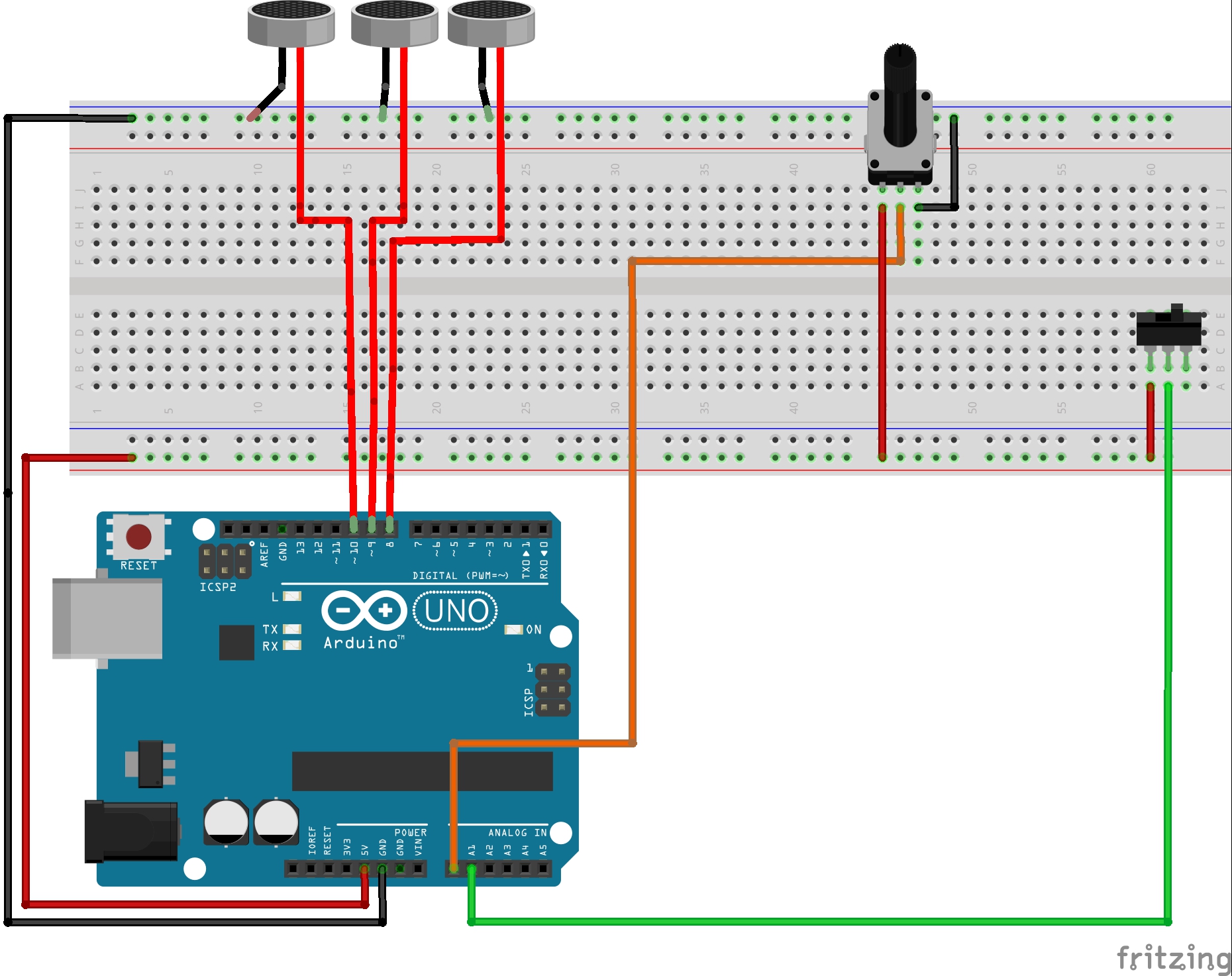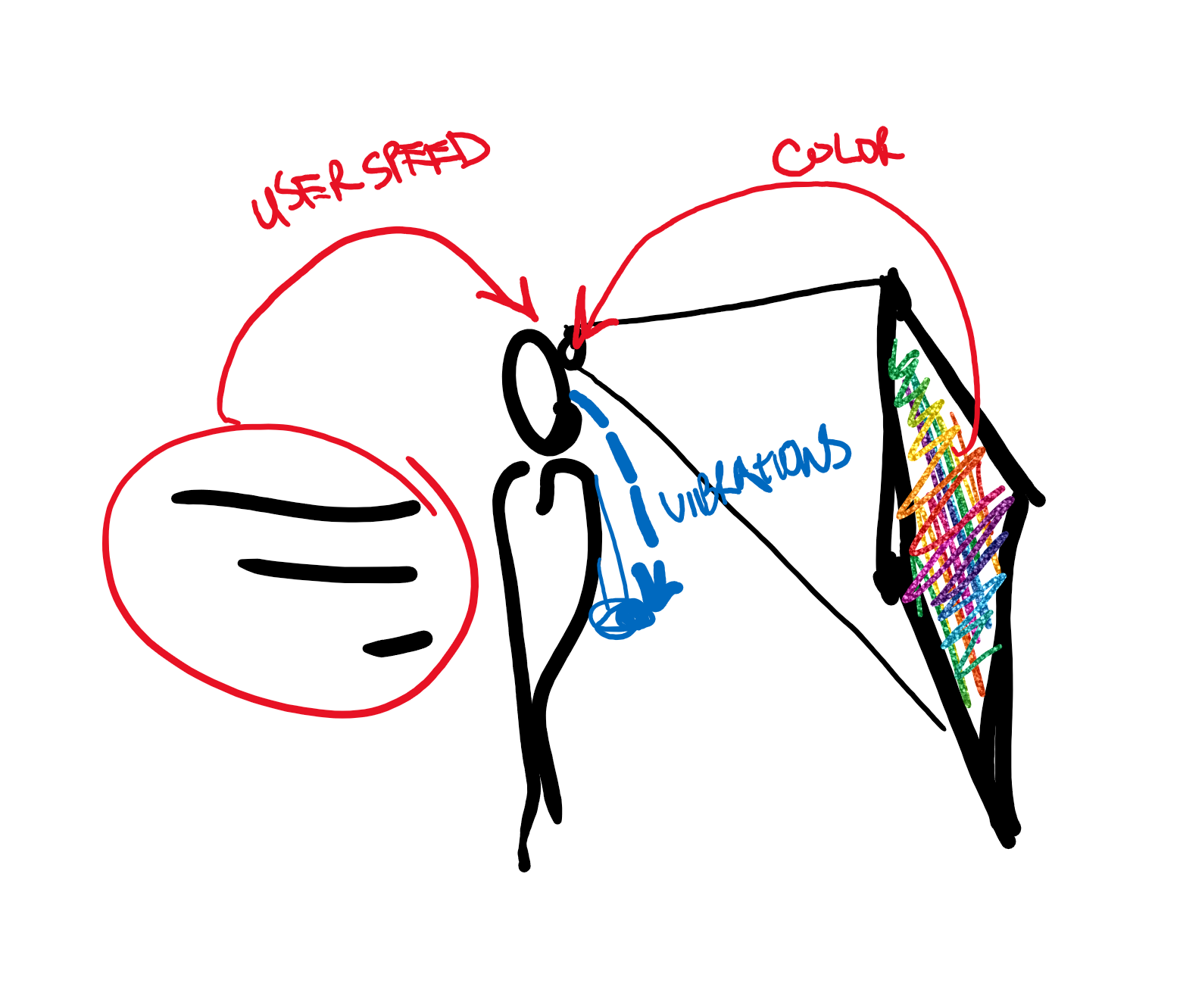Problem:
For people who either color blind or blind, seeing and comprehending color, which is embedded in many aspects of our lives as an encoder of information, can be very challenging, if not impossible. In addition, color adds another dimension to our experiences and enhances them as well.
A General Solution:
A device that would be able to detect color and send the information to actuators to display the information through vibration. Ideally, the system would be able to vary the specificity and accuracy of the detection (in terms of frame rate, but also in regards to the sample area used for color detection) based on the velocity of the user using it or other input variables.
Proof of Concept:
An Arduino with a potentiometer to represent the velocity of the user and three vibration motors (tactors) to represent the color data. These physical sensors and actuators are connected to p5.js code which uses a video camera and mouse cursor to select the point of a live video feed to extract color from. The color is then sent to the Arduino where it is processed and sent as output signals to the tactors. A switch is also available, when the user doesn’t want to have vibrations clouding their mind.
Fritzing Sketch:
The Fritzing sketch shows how the potentiometer and switch are set up to feed information into the Arduino as well as how the tactors are connected to the Arduino to receive outputs. Not pictured, is that the Arduino would have to be connected to the laptop which houses the p5.js code.

Proof of Concept Sketches:

The user’s velocity is sensed which alters the rate at which color is processed and sent back to the user through vibrations. The user data could also be extended to change the range of color sensing that is applied to the live feed to feel the colors of a general range.
Proof of Concept Video:
Files: